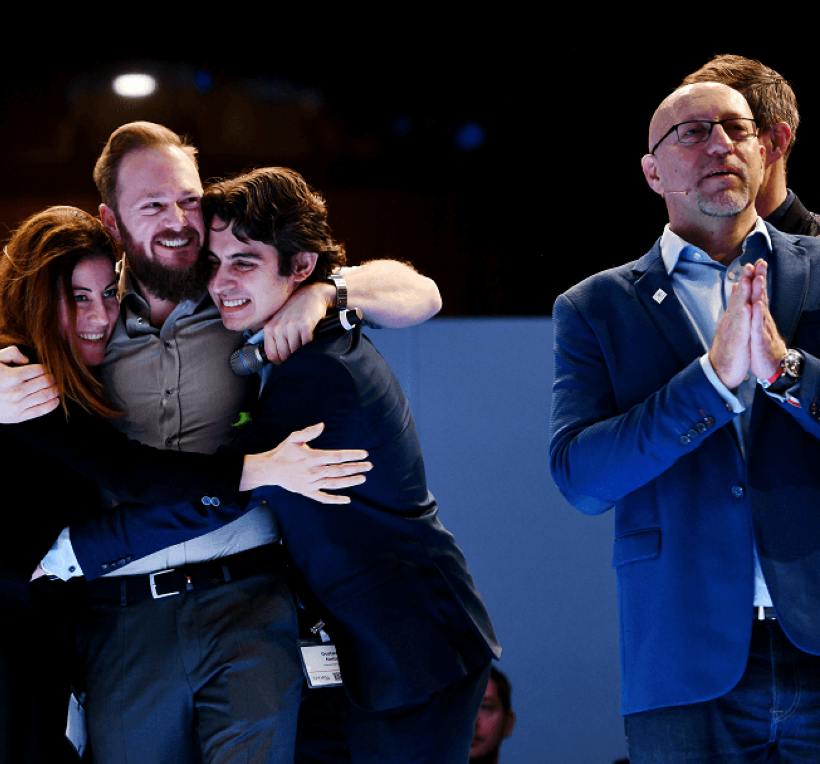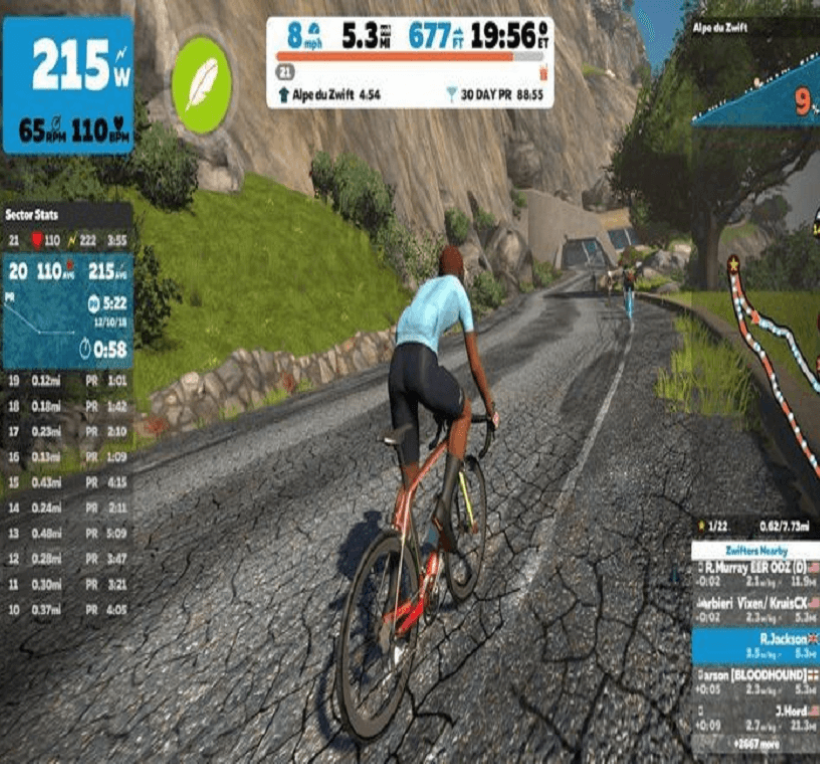

The Evolving Landscape of Broadcasting Rights in Sports A 2024 Perspective
Read Time: 5 min.
Introduction
As we enter 2024, the sports broadcasting industry is undergoing a remarkable transformation. The value of global sports media rights reached a record high, nearing $56 billion, as reported by the SportBusiness Global Media Report 2023. This growth is set against a backdrop of various challenges, including market fragmentation, shifting viewer demographics, and evolving consumption patterns. This blog aims to delve into these complexities, focusing particularly on the impact of Generation Z, and explore the innovative strategies being implemented to navigate this evolving landscape.
The Current Landscape
The value of the sports media sector has continued to grow, increasing from $54.698 billion in 2022 to $55.986 billion in 2023, with projections surpassing $60 billion in the following year. This growth is spurred by key events such as the Paris 2024 Olympics and UEFA Euro 2024. Football, or soccer, continues to be the dominant force in this domain, commanding a substantial portion of the media rights value. The United States, with its massive market share, remains the epicentre of this lucrative industry. However, beneath these robust figures lies a terrain riddled with challenges that are reshaping the broadcasting landscape.

Source: SportBusiness Global Media Report 2023
Innovative Strategies and Solutions for 2024
In the face of the multifaceted challenges that the sports broadcasting industry encounters in 2024, a spectrum of innovative strategies and solutions is being adopted. These initiatives help broadcasters stay relevant, engage diverse audiences, and navigate a rapidly changing media environment.
Harnessing Cutting-Edge Technologies
A primary area of innovation is the integration of advanced technologies into sports broadcasting. Augmented Reality (AR) and Virtual Reality (VR) are revolutionising the viewing experience by offering immersive and interactive content that brings fans closer to the action in ways previously unimaginable. Artificial Intelligence and Machine Learning are also playing a critical role. These technologies are not only enhancing the personalisation of content but also enriching viewer experiences with real-time statistics and predictive insights.
Condense, a company at the forefront of this industry disruption, exemplifies this trend. Condense has developed a comprehensive technology for real-time 3D video capture, enabling live streaming into virtual environments. Additionally, the company has introduced Studio 5, an innovative platform designed for hosting live events. This platform allows content creators to design and construct their own virtual venues, where they can broadcast their content live in 3D to audiences worldwide.
The National Football League (NFL) is a rightsholder which is also looking to utilise such technology. They have adeptly integrated AR into its broadcasts. This integration has significantly enhanced the viewing experience by overlaying real-time game data, player statistics, and strategic insights on the live video feed. Crucially, this innovation addresses market challenges, including shifting demographics and evolving consumption patterns. The introduction of AR in broadcasts has been instrumental in engaging younger, tech-savvy audiences, aligning with the NFL’s broader strategy to expand its demographic reach and adapt to the changing media consumption landscape. The NFL’s initiative sets a benchmark in the sports broadcasting industry illustrating the potent impact of embracing cutting-edge technologies to stay ahead in an increasingly competitive and technologically-driven market.
Adapting to a Multi-Platform Distribution Model
In response to market fragmentation, broadcasters are increasingly embracing a multi-platform distribution approach. This involves extending their reach across various platforms, including traditional TV, online streaming, and social media. By producing content that caters to different platforms, such as short-form videos for social media and on-demand content for streaming services, broadcasters can meet the diverse needs and preferences of their audience.
The National Basketball Association (NBA) has effectively leveraged this strategy by combining traditional TV broadcasts with the NBA League Pass, a streaming service offering live and on-demand games globally. Additionally, the NBA’s robust presence on social media platforms, like YouTube, has garnered millions of subscribers and views, particularly from younger demographics. This comprehensive multi-platform approach not only extends the NBA’s global reach but also drives significant revenue growth, illustrating the effectiveness of adapting to the varied media consumption habits of today’s audiences.
Focusing on Fan-Centric Engagement
Putting fans at the heart of broadcasting strategies is becoming increasingly vital. This shift involves crafting interactive and personalised experiences during broadcasts, like offering viewers a choice of camera angles or additional game-related information. The effective utilisation of viewer data to tailor content and recommendations significantly enhances the overall experience, making it more engaging and pertinent for each viewer. This trend is largely driven by technological advancements and evolving viewer expectations.
An illustration of this approach is evident in Major League Baseball (MLB)’s adoption of fan-centric strategies. MLB has harnessed technology to offer personalised viewing experiences. Their At Bat app, a pioneering solution, enables fans to select from various camera angles, access in-depth player statistics, and delve into historical data during live games. This level of personalisation, underpinned by viewer preferences and data analytics, has markedly increased fan engagement. MLB has observed a notable uptick in the usage of app features, particularly among younger demographics, demonstrating a successful resonance with fans desiring an interactive and customised viewing experience. The data-driven strategy behind these personalised offerings represents a significant evolution in how sports content is delivered and consumed.
Transitioning to football, UltraWide Air presents another innovative example. This technology, a first in football’s history, allows fans to view the game through the players’ eyes, immersing them directly in the action and offering an experience as if they were on the field themselves. Each player generates their own livestream, a groundbreaking feature that revolutionises how football is watched. UltraWide Air’s breakthrough lies not only in its technological prowess but also in its ability to connect fans more intimately with the game.
Creating Diverse and Inclusive Content
Reflecting the diverse interests and values of modern audiences, particularly those of Generation Z, is paramount in contemporary sports broadcasting. This necessitates the production of content that spans a broad spectrum of sports, including women’s sports and emerging sports disciplines. Additionally, the development of story-driven content, such as documentaries that delve into the narratives behind teams and athletes, has the power to attract a more expansive audience, extending beyond traditional live sports enthusiasts. This shift acknowledges Gen Z’s multifaceted interests and their inclination towards engaging, varied content.
The advent of Netflix’s sports series has markedly augmented fan engagement and viewership across a range of sports. Notable series such as “Drive to Survive” (Formula 1), “Break Point” (tennis), and “Full Swing” (golf) have not only drawn new audiences but also deepened the fan connection to these sports through personal and behind-the-scenes narratives. These docuseries have catalysed increased race viewership, heightened social media engagement, and a growing interest in attending live events. This phenomenon, often referred to as the “Netflix Effect,” has opened new avenues for marketing and sponsorships in sports, showcasing the reach and influence of these narrative-driven series.
Building Sustainable and Economically Adaptable Models
In an economically uncertain climate, the adoption of sustainable and adaptable economic models is key. Flexible subscription models, including options for micro-transactions or pay-per-view for specific events, can cater to the varying economic capacities of viewers. Similarly, innovative approaches in advertising, like targeted and interactive ads, can increase revenue while enhancing viewer engagement.
DAZN has introduced a flexible pricing model, including monthly subscriptions, pay-per-view options, and special event pricing, accommodating different viewer budgets and interests. This flexibility allows fans to choose how they want to access content, whether it’s for a single high-profile event or a longer-term subscription. Additionally, DAZN has leveraged targeted advertising, offering brands the opportunity to reach specific segments of their diverse audience. This approach has not only increased viewer satisfaction but also boosted DAZN’s revenue streams. Their adaptability in subscription and advertising models demonstrates how sports broadcasters can remain economically viable while meeting the needs of a diverse and changing audience.
The Role of HYPE Sports Innovation
Amid these changes, HYPE Sports Innovation is playing a pivotal role. Collaborating with entities like Eurovision Sport, HYPE is at the forefront of integrating cutting-edge technologies such as AI, AR, VR, and remote broadcasting into sports media. Their work is not only about enhancing backend operations but also about transforming the fan experience, making sports viewing more immersive and interactive. The partnership between HYPE and CBS Sports exemplifies how technological innovation can bring fans closer to the action, offering unique experiences that redefine sports consumption.
Final Thoughts
As 2024 begins, it is clear that the sports broadcasting industry is at a crucial juncture. The challenges of market fragmentation, coupled with the distinctive preferences of Gen Z, are driving significant changes in the industry. Embracing innovative solutions, understanding the nuances of Gen Z engagement, and leveraging the power of technology are key to ensuring the industry’s growth and relevance.
SportsTech founder? Apply here to our next GVA cycle Here
We are helping over 100 Sports Properties to increase revenue and reduce costs through innovation – Feel free to ask me how
We are opening the 2nd round of an exclusive AI in Sports Workshop with practical sessions delivered by the World Class Speakers for Sports Executives
If you would like to receive the full Brochure – Share with me your details below




Comments